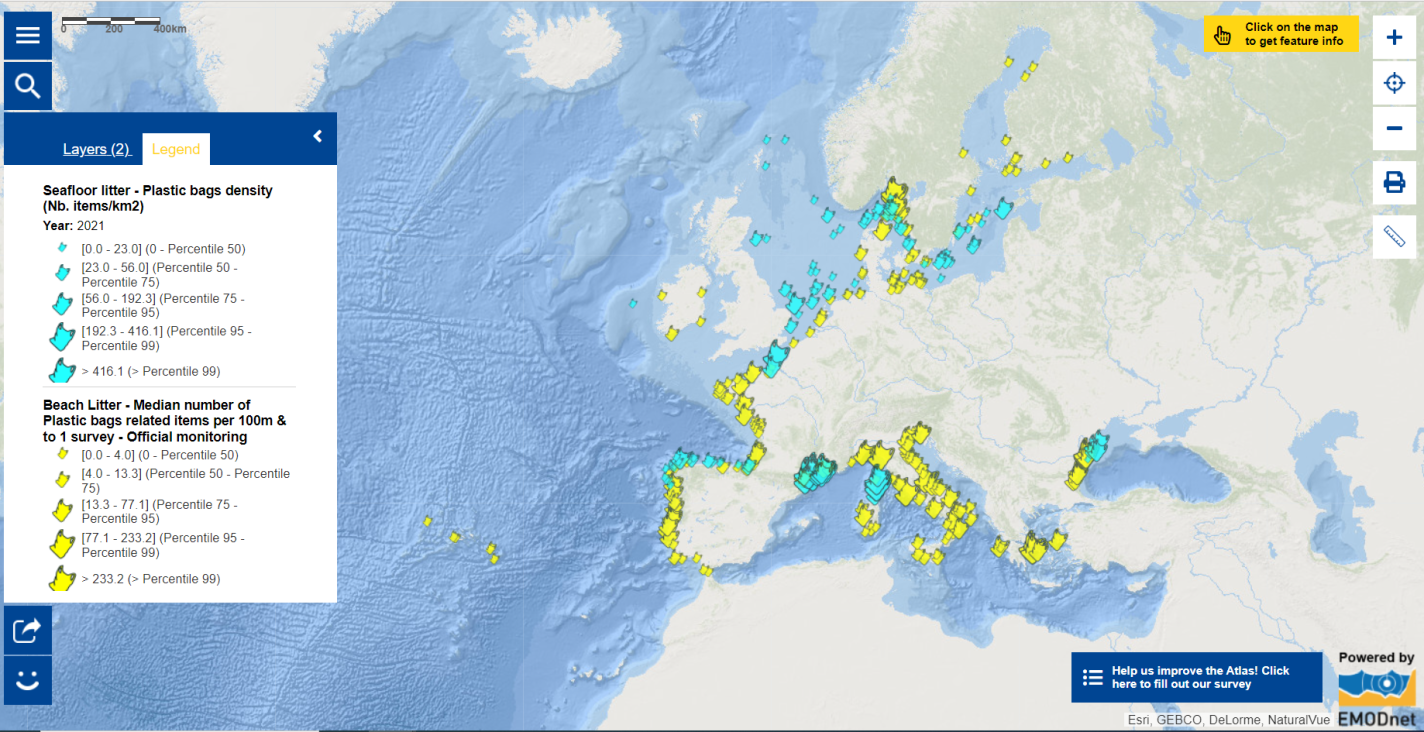Map of the Week – Taking Action on Plastic Pollution

From 29 May to 2 June, the second session of the Intergovernmental Negotiating Committee (INC) on Plastic Pollution took place at the United Nations Educational, Scientific and Cultural Organization (UNESCO) Headquarters in Paris (France). The escalating and alarming levels of plastic pollution causes severe negative impacts across the globe, in the context of environmental, social, economic and health dimensions of sustainable development. The aim of the INC on Plastic Pollution is to develop an international legally binding instrument to take measures against the intensifying levels of plastic pollution, including in the marine environment. [1] The second session concluded with a mandate for the INC Chair, with the support of the Secretariat, to prepare a zero draft of the agreement ahead of the next session, due to take place in Nairobi, Kenya, in November. [2] Plastic pollution was also addressed in this year’s World Environment Day on 5 June which was hosted by Côte d'Ivoire and supported by the Netherlands. Under the campaign ‘Beat Plastic Pollution’, the World Environment Day 2023 focused on solutions to combat plastic pollution.
The presence of plastic bags and various forms of marine litter poses a significant threat to marine life. Animals are at risk of becoming entangled or consuming these debris, which can expose them to harmful chemicals. As these toxins can accumulate up along a food chain, plastic pollution implies threat to human health worldwide. Moreover, marine litter has severe economic consequences, leading to the loss of valuable and recyclable resources in the ocean. Polluted beaches deter tourism and impact the livelihoods of fishermen, who increasingly encounter litter in their catches. Plastic pollution extends beyond mere beach clutter, but it forms a life-threatening trap for numerous marine animals, entangling them in large plastic pieces or causing them to mistake smaller fragments as food. Explore the Map of the Week to see the results of two plastic litter surveys. The blue symbols represent the number of bags collected by fish-trawl surveys over the period of 2021; whereas the yellow symbols show the median number of plastic bags along 100 metre segments of the European beaches from Marine Strategy Framework Directive (MSFD) monitoring, across the period from 2001 to 2020. Note that the absence of collected data in some areas does not mean they are free from plastic bags. As part of its plastics strategy, the European Union adopted a directive to restrict the use of several disposable plastic products and fishing gear.
Let’s join hands to combat plastic pollution!
- Read the Beat Plastic Pollution Practical Guide to get some insightful tips on how to become part of the global movement to combat plastic pollution!
- Explore resources for youth activities from the UN World Ocean Day community, including resources on plastic related topics!
- Participate in the Plastic Pirates ’ campaign to help clean up river plastic litter. This does not only help to reduce river litter—which otherwise would enter the ocean—but also equips students with hands-on research skills!
- Learn about Erasmus Maris , the educational sailboat initiative to conduct environmental science education and research!
- Join the #EUBeachCleanup wave!
- Support the Ocean Decade by submitting an action that addresses the issue of marine pollution!
The data in this map are provided by EMODnet.
[1] https://www.unep.org/about-un-environment/inc-plastic-pollution
[2] https://www.unep.org/events/conference/second-session-intergovernmental-negotiating-committee-develop-international/media#PressRelease
